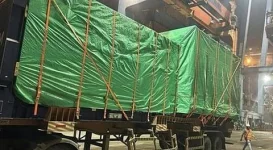- Views: 1K
- Replies: 5
A senior Indian Air Force (IAF) official has stated that Pakistan's potential acquisition of the Chinese-made J-35A stealth fighter jet is unlikely to significantly alter the region's strategic balance.
According to the official, the introduction of these fifth-generation aircraft into the Pakistan Air Force (PAF) would not provide a decisive advantage or enable successful cross-border aerial raids into Indian territory.
The official suggested that the number of J-35A jets Pakistan might acquire would likely be too small to have a significant impact on regional air power. This assessment draws parallels with Pakistan's earlier purchase of approximately two dozen J-10CE 'Vigorous Dragon' fighter jets from China.
The official noted that during a recent aerial engagement, these J-10CEs, armed with PL-15E long-range missiles, did not achieve their objectives against IAF aircraft, citing superior Indian combat tactics and electronic warfare capabilities as key factors in neutralising the threat.
Further elaborating, the source stated that even with the advanced capabilities of the J-35A, the PAF would not gain the ability to dominate the airspace or conduct deep penetration strikes inside India.
It was emphasized that operational limitations, such as a potentially small fleet size and the immense logistical challenges of maintaining stealth aircraft, would render the acquisition more of a symbolic gesture than a genuine strategic transformation for the PAF.
The confidence of the IAF is rooted in its formidable and multi-layered air defence network. This integrated system includes advanced surface-to-air missile platforms like the Russian S-400 Triumf and the indigenous Akash missile system, all linked by a comprehensive radar grid providing real-time situational awareness.
This robust ground-based defence backs a modern fighter fleet led by the highly capable multi-role Dassault Rafale and the air superiority Sukhoi Su-30 MKI aircraft.
The official stressed that the combination of superior pilot training and advanced electronic warfare (EW) suites ensures that any hostile aircraft entering Indian airspace would be met with a powerful and coordinated response.
While acknowledging that the J-35A, a stealth platform developed by China's Shenyang Aircraft Corporation, represents a technological leap for Pakistan's current air force, the official dismissed immediate concerns.
The significant financial investment required for acquiring and maintaining advanced stealth fighters, coupled with Pakistan’s documented economic challenges, suggests that the PAF would only be able to procure and field a small, operationally limited number of these jets.
Meanwhile, the Indian Air Force is actively pursuing its own extensive modernization goals to preserve its qualitative and quantitative advantage in the region.
A key element of this strategy is the development of the indigenous Advanced Medium Combat Aircraft (AMCA), India's own fifth-generation stealth fighter program.
These forward-looking initiatives, along with the continuous strengthening of missile defence systems, are designed to ensure India maintains its strategic edge and defensive capabilities.



